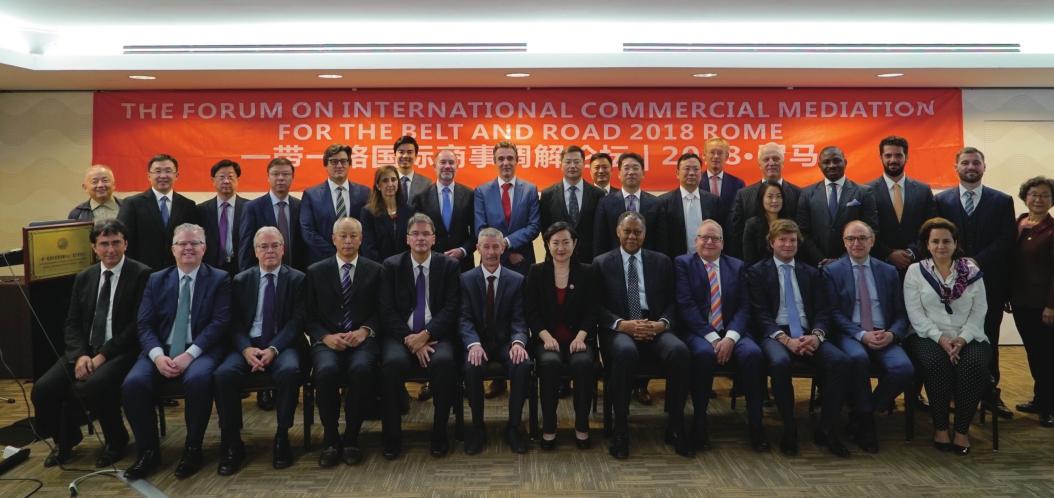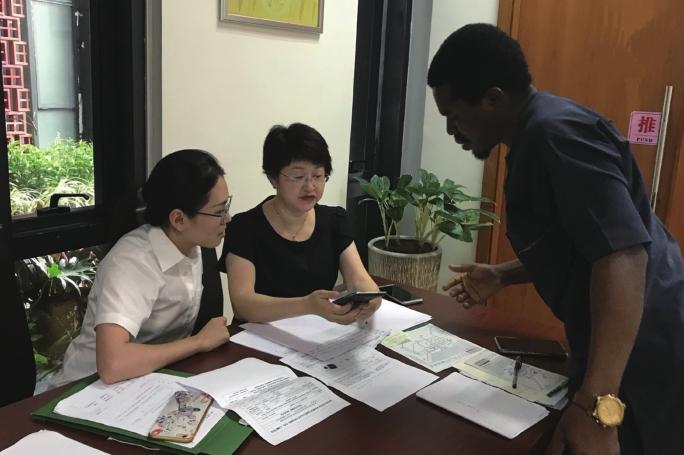SOLUTION FOR DISPUTES
2019-04-18ByZhangShasha
By Zhang Shasha
After being blacklisted by a seller on WeChat, Chinas largest multi-purpose messaging and social media app, James, a businessman from Nigeria in China who declined to give his full name, was unable to contact the seller and did not receive the goods he expected.
He had purchased a batch of electronic components from the seller in Shenzhen, south Chinas Guangdong Province, in 2014. The goods were delivered in two separate shipments. After receiving the first batch, he found some items were substandard. He contacted the seller to ask that he replaced the bad ones and sent them together with the second batch, which would total 2,000 pieces. However, the second batch of goods he received in 2015 did not amount to that quantity.
Plagued by the case for three years, James finally turned to the Shenzhen police for help and they suggested he appeal to the court. The Peoples Court of Shenzhen Qianhai Cooperation Zone introduced him to their mediation center, where he found a solution within three days.
The Qianhai Court Mediation Office of International Commercial Mediation Center for the Belt and Road was launched in May 2018 in coordination with the Beijing Retio Legal and Commercial Service Center for the Belt and Road Initiative. The latter was established in October 2016, aimed at providing solutions for commercial disputes for Belt and Road participants.
To date, the Beijing center has signed cooperation agreements with several countries, including France, the UK, Spain and Indonesia, to establish offline mediation centers. Along with an online mediation platform, it can provide services for enterprises in 63 countries and 172 cities. By the end of 2018, a total of 179 cases had been accepted and heard, with 70 percent mediated successfully, according to the Beijing center.
Cultural differences
Shi Meiyun, who lived in Hong Kong for more than 20 years and worked in the commerce and trade industry before mov- ing to Shenzhen, was the mediator for James case. She told Beijing Review that apart from legal expertise and ample experience, mediators have to take a 40-hour online training and pass an exam before receiving a certificate to work at the Beijing center.
After gathering basic information from James, Shi called the seller. “The moment he answered the phone, he poured out his grievances,” Shi said. The seller told her that the contract had been executed properly, but James had spoken badly of his company on WeChat Moments, which damaged its reputation. Moreover, it was hard to communicate with James and since they failed to reach an agreement, he blacklisted him.
“Cultural differences and language barriers are two obstacles that prevent parties from having effective communication, which can lead to misunderstandings and disputes,” Shi said.
Belt and Road participants, with various cultural backgrounds and language environments, are bound to have misun-derstandings or disputes of various kinds during commercial activities. The disputes can take place under different scenarios ranging from international goods sales and deliveries to intellectual property rights infringements, Shi said.
To cope with these issues, mediators can play a crucial role. “It is a challenge for mediators to grasp the point of communication,” she said. “Because at the beginning, the two parties are usually in confrontation mode and are very nervous in front of the mediator, making them cautious and even defensive when answering questions.”
But language can bridge the gap and move the relationship closer, she added. Proficient in Mandarin, Cantonese and English, Shi possesses strong advantages for reaching effective communication. For example, she said when dealing with Hong Kong-related cases, speaking Cantonese makes it much easier to break the ice. Currently, there are 235 mediators like Shi with various cultural backgrounds recruited by the Beijing center to serve Belt and Road participants.
Another challenge for mediators is how to persuade the parties to settle disputes through mediation, which is much more flexible, efficient, timesaving and cost-effective than judicial proceedings, she said.
Chinese wisdom
James made a wise decision by agreeing to solve the problem through mediation, Shi said. As a foreigner, he would have had to get his evidence authenticated by his countrys embassy if he had wanted to sue the seller. However, proceedings can take up to a year and a great deal of money must be spent on authentication and translation services.
During mediation, Shi spent just 15 minutes talking with the seller to reach an agreement to send James the components as required. The case was brought to a close within three days after the seller delivered the goods.
Apart from offline mediation, the online mediating center is also a highlight of the Beijing center where applicants from different parts of the world can adopt a video mediating system and use e-signatures.
“The traditional way of international commercial dispute resolution mainly consists of litigation and arbitration, which feature complex proceedings and a hidden risk of poor implementation, increasing the costs of dispute resolution,” Wang Li, head of the Beijing center, told Beijing Review.
“International commercial disputes are different from civil disputes,” she said.“Rapidly evolving market opportunities do not allow them to choose a long cycle or possibly an ineffective way to resolve the situation.”
In addition, if a dispute is to be settled through courts, information related to the two parties will be disclosed through public court proceedings or judicial decisions, whereas international commercial dispute resolution keeps the information confidential, which is conducive to protecting business secrets, she added.
The ancient manner of resolving disputes and conflicts in Western civilizations considered dueling a fair method, whereas Oriental civilization pursued harmony. Thus, today, Oriental wisdom as manifested in dispute resolution lies in mediation, Wang said.
She added that the best way to resolve disputes during the development of the Belt and Road is through mediation, which has become one of the most popular alternatives for dispute resolution.
On October 10, 2018, a joint declaration was issued by 21 institutions from 12 countries at a forum on international commercial mediation for the Belt and Road, held in Rome, Italy, which promoted the formulation of principles for international commercial mediation.
Moreover, the United Nations Commission on International Trade Law(UNCITRAL) has been committed to advancing the formation and implementation of mediation principles. As a member country of UNCITRAL, China participated in the formulation of the Singapore Mediation Convention, which is expected to be signed on August 1, and will facilitate the enforcement of international settlement agreements arising from mediation.
Shi quoted two Chinese sayings to emphasize the significance of mediation:“Harmony is most precious” and “Harmony brings wealth.” If mediation is given a major role in international commercial dispute resolution, trade and investment among Belt and Road participants will be boosted and developed in a healthy way.
